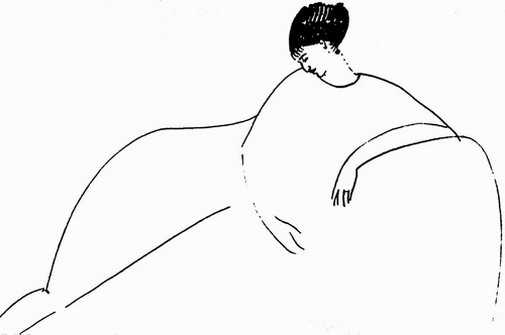It is important to know when to stop. A cell has to know when to stop expanding. A flower's pistil and its stamen when to stop elongating. And a flagellum to stop extending. Because there is a fair chance that without this knowledge, it would be difficult to keep organisms alive. But how do all these various parts of living matter know when the time has come to stop growing? There must be a mechanism of some kind. A sort of molecular device which holds up a STOP sign, or acts as a means of measure when something has reached the required shape or length. Recently, such a scheme was discovered in the flagella of the alga Chlamydomonas reinhardtii; a ruler of sorts that defines not only the length of the units which make up the axoneme but also the nature of the flagellum's structure. This molecular yardstick is a protein known as coiled-coil domain-containing protein 40 - or CCDC40.
All things have ideal lengths. Too long or too short is rarely a good option. This holds for people's height, the length of their tongue and of their toes. And, on the molecular level, for the width of a cell and the length of a domain within a protein complex. That is why it is necessary to have systems inside us that act as surveyors making sure that everything is kept within acceptable norms.
Flagella and cilia are found on the surface of many cells - or one-cell organisms - and are either used to move through fluids or to make fluids move past them, besides frequently showing acute sensory roles. While cilia have both motile and fluid-circulation functions, flagella are only used for cell motility. Both flagella and cilia form slim elongated structures that protrude from the main body of a cell but are still enclosed within its membrane, which thus forms a sort of sheath around them. Their molecular structure is identical and includes what is known as an axoneme as well as many accessory matrix proteins involved in assembling or disassembling the axoneme - a very dynamic structure. In all, it is thought that about 300 proteins are engaged in keeping flagella functional.

Source: wikipedia
Characteristically, an axoneme is a long cylindrical structure made up of nine long outer filaments, or microtubules, which line its circumference, and one long central filament. The central filament is composed of two adjoining microtubules. The nine outer filaments are equally composed of two adjoining microtubules but are also flanked by what are known as dynein arms and radial spokes. It is not difficult to understand that such a complex structure demands a scaffold; something that makes sure that the different parts are not only bound to each other but that it also happens in an orderly fashion.
CCDC40 is part of the scaffold. If CCDC40 is lacking or defective, the parts making up the axoneme lose their sense of proportion and direction, and the structure is disorganised and badly assembled. This results in a flagellum, or cilium, that is short and unable to beat. Such an occurrence in sperm brings about male sterility for example. So it is important for the axoneme to piece together properly. How then does CCDC40 manage this?
A closer look at the axoneme shows that its various components are arranged within a 96 nanometre longitudinal repeat whose extremities are marked by the positions of successive radial spokes. This 96 nanometre periodicity is broken if CCDC40 is defective. Why? CCDC40 stretches out along the axis of each microtubule, spanning exactly 96 nanometres. This is not only used as a sort of molecular ruler along each microtubule but acts as an anchoring site to which components can bind. CCDC40 is indeed involved in the correct assembly of an axoneme's dynein components.
If a flagellum - or cilium - is defective, many things can go wrong. Typically, a flagellum beats so that a cell can move around; cilia, on the other hand, will beat either for a cell's mobility or to move fluids that surround a cell. Be it cilia or flagella, if something is wrong with CCDC40, the effects can be devastating. Besides male sterility, if cells are unable to move, an organism's development can be impaired. As an example, the position of internal organs in an organism can be mirrored, a condition known as situs inversus in humans. Defective cilia are also the cause of primary ciliary dyskinesia, a condition which affects the lungs that are unable to brush away the mucus and clear the airways. Clearly, CCDC40 seems to be an ideal target for designing drugs that would be able to re-establish impairments its mutation causes.

